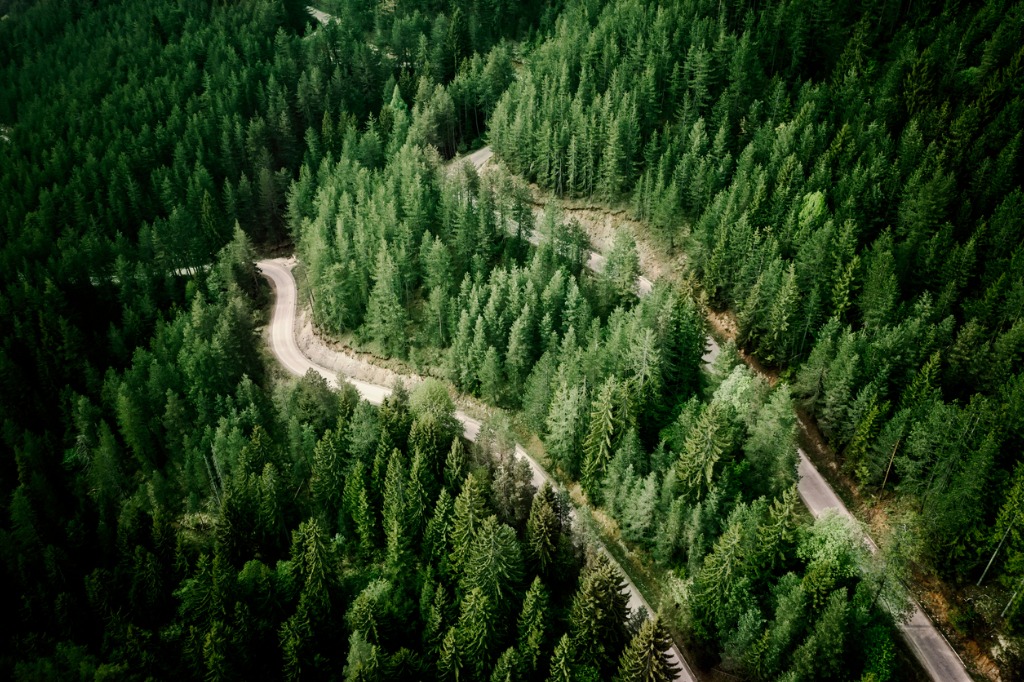
Understanding your tax responsibilities is an essential part of managing forestry assets. But many asset managers struggle to understand and comply with timberland property taxes. In this post, we break down six concepts you need to know.
How Timberland Assets Are Taxed
Timberland property tax shares some similarities with traditional property tax. They’re both taxes paid by the owner to the state or local government on the value of an asset.
However, what makes timberland property tax unique is that the timber on a property is considered a distinct and independent asset from the property itself. So, some states collect property tax on both the value of the land and the trees while others collect the tax on the value of the land only. If and when the trees/assets are harvested, a tax is then collected on the value of that asset.
Another consideration that makes the taxation of timberland is scale. Unlike commercial or residential properties, timberland holdings are often massive, spanning tens or hundreds of thousands of acres. Because of this, a single property can span multiple taxing jurisdictions and even cross state lines.
This makes tax compliance a serious challenge for the land asset management industry. Unlike a simple investment like a house, asset managers often have to deal with dozens of tax rates and deadlines on just one asset. If you manage land at any kind of scale, the complexity quickly becomes overwhelming.
How to Leverage Technology
In theory, you could use any tax application to manage your timberland property taxes. You might even use a more traditional method like spread sheets.
But if you manage large land holdings, specialized property tax software designed for your industry is going to offer a number of advantages, including:
- Greater information accessibility
- Detailed reporting
- Robust automation
- Data security
Managing property taxes using manual or outdated processes is going to be labor-intensive and prone to error. Make technology work for you and create streamlined and repeatable processes that automate the most rote work. Doing so will offer significant time savings and better outcomes from your compliance efforts. (Watch this video to learn how the process works.)
How to Keep Accurate Property Records
Property tax relies heavily on record keeping. Your compliance depends on your ability to store, recall and interpret hundreds of critical documents, including:
- Property deeds
- Historical property and parcel data
- Tax records
- Payment records
This tax compliance becomes much easier if you have a centralized system for managing and accessing these tax records. These management solutions can also integrate directly into your accounting and GIS software.
Additionally, many asset managers use a cloud-based land records management system to secure all of their legal property documents in one place.
How to Leverage GIS
GIS (geographic information system) is a tool that uses spatial data points, lines, and polygons to represent information about the Earth at a specific space in time.
GIS applications allow users to display and analyze data in an interactive and visual way. You can also track the way spatial information changes over time.
One of the most powerful features GIS offers land asset managers is the ability to map the boundaries of the taxable area against the actual legal boundaries of the property.
This enables you to visualize property taxes and jurisdictions against corresponding land boundaries. It also helps you spot discrepancies that would otherwise cause overpayments or worse— not paying for something that you should have. This technology is essential when it comes to property tax management.
When to Outsource Administration and Technical Support
Even if you leverage technology to automate your manual tax preparation, there will still be some administrative work for your in-house team to manage. Plus, you’ll likely need technical support for developing, maintaining and securing your systems.
To solve this problem, many asset managers outsource their administrative and technical support to a third party. In addition to lightening your workload, property tax service providers can help you improve your compliance processes while creating better outcomes in the long run.
How to Get Compliant
Like other forms of tax, the only way to get compliant with timberland property tax is by knowing exactly what your liability is. To do that, you’ll need to look at all of your land holdings and the local tax codes of every municipality that land occupies. This gives you an idea of how much you owe, who you owe it to and when everything is due.
From there, you’ll need to confirm the property is registered correctly and tax billings are up to date. Ideally, you’d also set up a property tax system to help you streamline and manage the entire process.
Conclusion
The combination of scale with the separate taxation of timber and land makes timberland property taxes a challenge for many asset managers. Fortunately, every business can get compliant by following the right steps and integrating the right solutions, ensuring that you’re getting the most out of your land

Let’s Work Together
Orbis helps you make better sense of your assets, and better use of everything involved in managing them. Request more information or book a consultation with us today.
